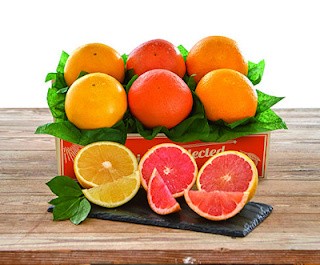[ad_1]
Here at Florida Fruit Shippers, late October and early November are an exciting time of year. After the lull of the hot summer, when citrus trees in our groves are growing green and lush in full sunlight, certain varieties of citrus such as grapefruits, navel oranges, and tangerines ripen to their full glory and become ready for harvest in the autumn. Meanwhile, other varieties continue to mature and sweeten through the cooler months so that they can be picked and enjoyed well into winter and the new year.
 |
| Photo by Wendy Aros-Routman |
What is a Citrus Growing Season?
In what is known as the “Citrus Belt,” the subtropical part of the United States that includes southern California, parts of Arizona and Texas, and Florida, citrus can grow year-round. As such, it’s always “citrus growing season” in these areas, and despite variations in fruit harvesting seasons and a dormant period during colder winters, citrus trees are always in a stage of growth and fruit development. For those of us who are most interested in eating the delicious fruits, however, we are more interested in “harvest” or “picking” season versus “growing season.” Harvest season varies according to the type of fruit and various latitude, soil, and climate change-induced factors such as temperature variability, water availability, storms, diseases such as citrus greening, and other dynamic conditions. Generally, however, there is a pattern that we can rely on from year to year across the collective citrus belt, climate change factors notwithstanding.
Drop and Give Me Three
Drop three stages, that is, of citrus fruit development! In Florida, mature citrus trees typically bloom after the winter dormant period, producing a lovely fragrance reminiscent of gardenias, jasmine, honey, and citrus-scented essential oils. After blooming, the first phase leading to fruit production is the dropping of unpollinated flowers, which can be up to eighty percent of the total blossoms on each tree. The second drop stage occurs when the tree releases marble-sized green fruits, and a third drop stage occurs for almost-ripe fruits that didn’t quite “make the cut.” This is simply nature’s ingenious way of ensuring that all of the tree’s energy is focused on the best possible fruit outcome. It is interesting to note that, unlike some other types of fruits, citrus will not ripen once separated from the tree, so fruit must be picked at its peak of ripeness to be enjoyed. In the groves, we do our best to support this natural design by providing the most nourishing conditions for these cycles to occur and picking them at their peak ripeness, thereby naturally harvesting the most delicious fruit!
Ripe for the Picking
Of course, it follows that the larger the citrus variety, the more months it takes to ripen, and so each type of citrus tree will blossom, drop, fruit, and ripen at different times of the year– depending on variety, latitude and growing conditions–to allow for these various gestation periods. Grapefruits, being the largest, likewise usually take the longest, and we get to reap the benefits of a long ripening period that starts in early spring as one of the first citrus fruits of the season–and in three delicious varieties! The other first citrus of the season is the much smaller but equally delicious tangerine, which despite its small size has a rather long ripening period that also begins in the springtime. Florida Fallglo Tangerines are a special and very tasty variety, only available in November, that have become the benchmark fruit to mark the beginning of the citrus harvest season. Navel oranges are also ready this time of year.
So, as we embark on this festive season of “Season’s Greetings,” we can also greet the new citrus harvest with mouthwatering anticipation. Enjoy!
Sources:
Citrus Flowering Season: When Do Citrus Blossoms Bloom (gardeningknowhow.com)
Winter Fruits: It’s Harvest Time for Sunshine Citrus (thespruceeats.com)
2011_Dec_factors_citrus.pdf (ufl.edu)
Citrus Trees: How to Grow Lemons, Oranges, Limes, and Other Citrus Fruit | The Old Farmer’s Almanac
[ad_2]







